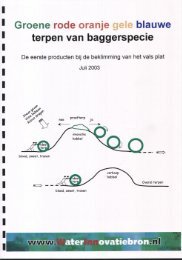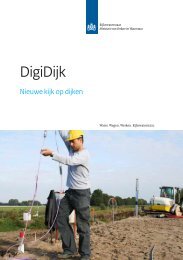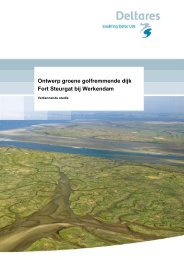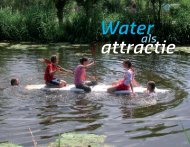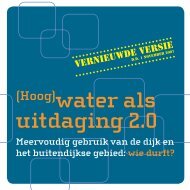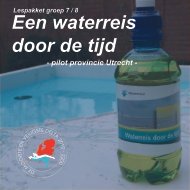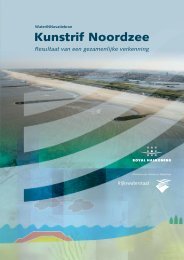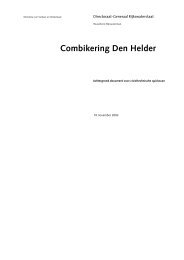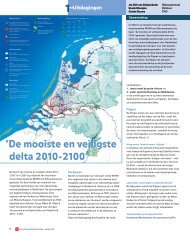Creating opportunities to adapt to climate change through innovative ...
Creating opportunities to adapt to climate change through innovative ...
Creating opportunities to adapt to climate change through innovative ...
You also want an ePaper? Increase the reach of your titles
YUMPU automatically turns print PDFs into web optimized ePapers that Google loves.
& Gill BV have came up with e new business idea: the Happy Shrimp Farm; the first tropicalshrimp farm in Europe. They call it a new eco-industrial company that benefits the economyand the environment. Here is how:The Happy Shrimp greenhouse-enclosed Farm in Rotterdam uses the waste heat (otherwisereleased in<strong>to</strong> the air) of the neighbouring power plant <strong>to</strong> warm the farm. A biological filterbed makes sure the waste streams of the farm don’t pollute in order for future generations<strong>to</strong> enjoy shrimp happily in an un<strong>to</strong>uched environment. Another advantage of a shrimp farmin Europe is that the shrimp available is at its most freshest as well as safe <strong>to</strong> eat (see FoodSafety page). Happy Shrimp made it their responsibility not just <strong>to</strong> farm shrimp eco-friendlybut also <strong>to</strong> tell people about industrial ecology, sustainability, energy use, healthy food andjoyful lives. Their web site is a great and clear source of information full of happy shrimps.To feast on Happy Shrimp you have <strong>to</strong> wait until March 2007 when they will hit the market.The construction of the farm started in April this year and the official opening is inSeptember followed by the Night of the Prawns Party. In the meantime you can Shrimp UpYour Life with the Happy Shrimp Merchandise: 100% organic t-shirts, stickers, or a HappyShrimp Eco-Sphere; a NASA developed self-sustaining living environment for 3-4 small brightred shrimps! Great how far you can take a sustainable shrimp locally! ::Happy Shrimp via::Springwise”5.5See example at http://www.aquaphy<strong>to</strong>.com/5.6See attached file “WageningenPresentation saline agriculture.pdf”5.7“Nice project, and regarding <strong>to</strong> your question if brackish water is in our focusof interest: no, not really, but besides we’ve done some work withaquaculture in this kind of environment.I think that the production of brackish water can be used <strong>to</strong> create a naturereservation area. Here in Zeeland we have about 900-1000 hectares of saltwetland on former agricultural land, which was already difficult (brackish)for the traditional crops. We tried some aquaculture with the algae in thiskind of area as food for shellfish, but not very successful. The main issue wasthat the salinity was <strong>to</strong>o low, for shellfish aquaculture you need at least 20promille salt, and also the algae in these areas where not of any food value.You will need higher salinity.There might be possibilities for silt vegetables or ragworms, but these arenot our very core business.” - Marco Dubbeldam, Stichting Zeeschelp5.8See attached file “AlbertGoedbloedThesis.pdf”5.9See attached file “negenborn-multi-agent-water.pdf”5.10See attached files “Schutgegevens 2009_01-06.xls” and “tunnel depth.doc”5.11See attached file “Roundtable 21st January.ppt”5.12See attached video “BLUE ENERGY”24



